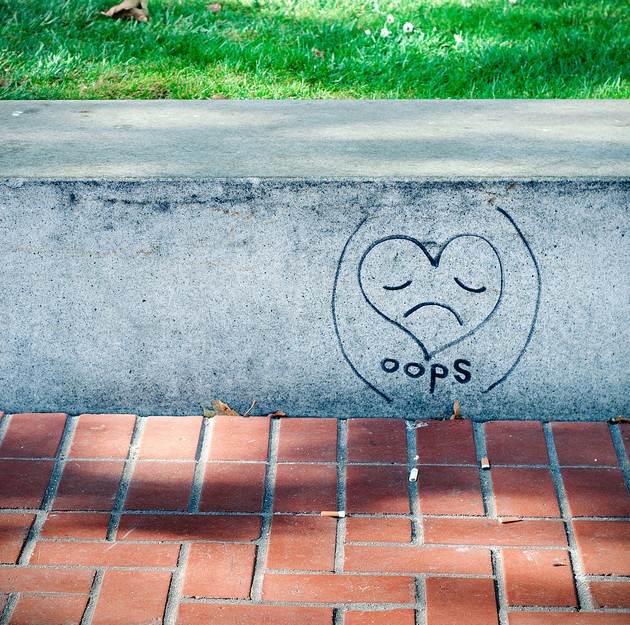
“More people should apologize, and more people should accept apologies when sincerely made.”
~ Greg LeMond
My two kids fought a lot when they were young. The disputes were usually over territory or property. I can recall one such instance with clarity.
My son was interrupting the imaginary class being conducted by my daughter. Once it was all settled, he was forced to apologize. Once his apology was accepted, they had to hug to seal the deal. Only then could they get on with their relationship.
The apology process requires two people: the giver and the receiver.
The Giver.
So you offended someone you care about, maybe even someone you love. Now what?
The first action you should take is to apologize. Even if you have not had the time to examine what happened…apologize.
Second, sit back and reflect on what happened. Be honest with yourself. Take an afternoon or evening to gain clarity on the situation. Own your role. However, do not delay longer than a portion of a day to get on with a complete and sincere apology. Keep in mind that while you are reflecting, they are hurting. Your apology will work toward fixing that hurt…don’t delay.
Lastly, go and apologize. Offer a sincere and complete apology.
The sincerity will spring from your reflection and being timely. If you intend to shirk responsibility or wait too long, sincerity can be lost and put the relationship in jeopardy.
A complete apology is comprised of three parts:
Part one. Clearly state your wrong doing. Do not attempt to couch what you did in elusive language. Do not state your wrong doing and then utter the word “but.” When you add the “but,” you are actively attempting to transfer responsibility to the person you wronged.
Part two. You must make amends. If you damaged property, then fix or replace it at your expense. If you can make it right, do so at your expense. This is a tangible way to demonstrate remorse. If you are unable to make full restitution or amends, get as close as you can.
Part three. Offer a solution. During your time of reflection, it is likely you unearthed the cause or catalyst for your behavior. This part is an honest attempt to avoid a reoccurrence in the future. You and the other person should be able to come to an understanding and move forward with it in place. But, be honest here. If it is something that has repeated in the past or is likely to repeat in the future, plan accordingly. Do not plan for best case scenario. Instead say, “If this presents itself in the future, what do we do? How do we react?” Write the plan down if it helps. Refer to your plan when you need to and use it.
The Receiver.
So someone you care about offended you, maybe even someone you love. Now what?
The first thing you should do is expect a complete and sincere apology.
Second, be patient. It may take the offending person time to collect their thoughts and gather their courage to offer a proper apology.
While you are being patient, reflect honestly on the role you played. It is likely that you share in the blame. If you do, be prepared to apologize for it.
Third, be willing to listen. While you are being apologized to, be silent. It takes courage to apologize. Do not interrupt or speak until the apology has concluded. In fact, when you finally do speak, say this, “Thank you. That took courage. If you are done I would like to respond. Is now a good time for me to talk?”
When you do talk, be sincere. This is not a time to revel in being right or being the victim. If you need clarity on something they said, ask now.
Lastly, accept the apology. Hug it out…as the kids say. Try to do something affirming at this point. Go for a walk, grab dinner, or binge watch something you both enjoy. This is a time to reestablish the beauty of the relationship.
What expectations are realistic at this point?
No matter the size of the offense or effectiveness of the apology, one thing remains true. The apology is just the first step. It is an essential step, but it is the first. Do not expect everything to be fully restored immediately following the apology. It would be wonderful if it worked that way, but it simply does not.
An apology is not a reset button on a relationship. It is a bandage that facilitates healing.
Think about how a bandage works. It is critical to the healing process, but it is only the first step. Pain and hurt and damage remain. Healing takes time. An apology works like this.
Why does an apology work?
It works because it allows both people to demonstrate that they value the relationship; one by giving the apology and the other by receiving it.
Think about these scenarios and which relationship is most likely to persist. A relationship with repeated big offenses followed by repeated sincere apologies or one with minor offenses followed by no apologies.
I think it is obvious that the first scenario is more likely to keep it going. It’s not ideal, but it reveals the power of apology.
Healthy relationships will have conflict. You can count on it. If they are important, then they are worth the effort the apology process requires.
So, if you owe someone an apology, go do it. And if you are owed an apology, be ready.
Author: John Geers
Image: Flickr
Editors: Emily Bartran; Yoli Ramazzina








Read 17 comments and reply